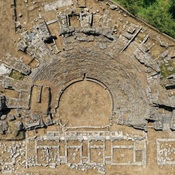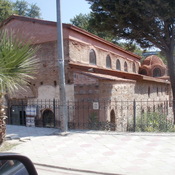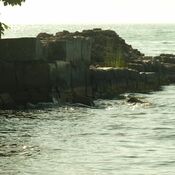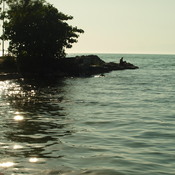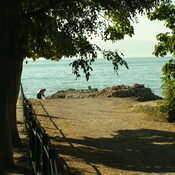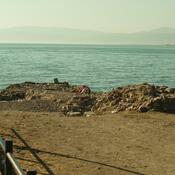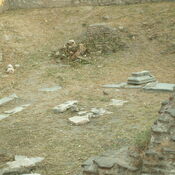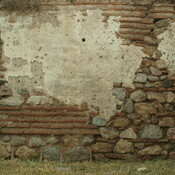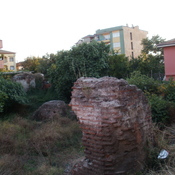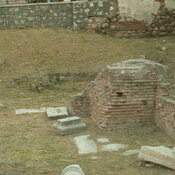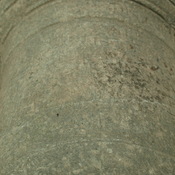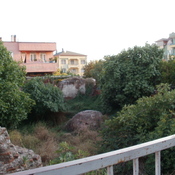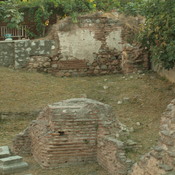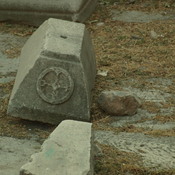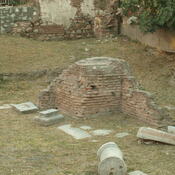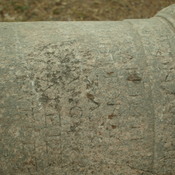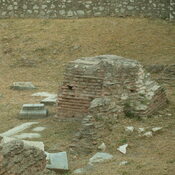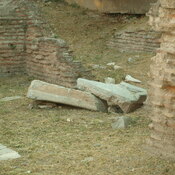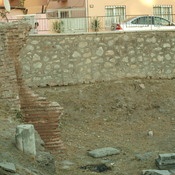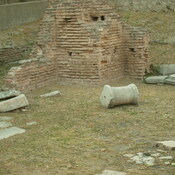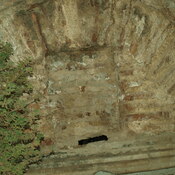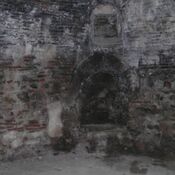Es gibt noch keine deutschsprachige Anmerkungen. Präsentiert wirden Anmerkungen auf English.
Nikaia modern Iznik located in the eastern shore of Iznik Lake (ancient Greek name was Askania), was called Elikore or Ankore at the beginning. The first habitation remains in the site dates back to 2500 BC. Antigonus I Monophthalmos established a colony of Antigoneia in there. The settlement established in here before the 7th century BC, i.e. before the immigrations of Trak Tribes was called 'Helikare'. On the coins minted in the city, the epithet ‘Khryseapolis’ (Golden City) was printed. The city was renovated by Antigonos Monophtalmos in 316 BC and renamed as Antigoneia1. After the death of Alexander the Great the city was handed over to diadochus Lysimachus, who. probably around 301 BC refounded the city and named it after his first wife, Nikaia. In 293 BC, it became a part of Bithynia Kingdom. Later Nicaea it became one of the two important cities (with Nicomedia) of the Roman province Bithynia (established 74 BC). Nicaea is known as the location of the first oecumenical Council in 325 AD.
Sources:
- Strabo, The Geography of Strabo, Volume II,https://www.gutenberg.org/files/44885/44885-h/44885-h.htm
Referenzen
- ↑Nicæa,the capital of Bithynia, is situated on the Ascanian lake. It is surrounded by a very large and very fertile plain, which in the summer is not very healthy. Its first founder was Antigonus, the son of Philip, who called it Antigonia. It was then rebuilt by Lysimachus, who changed its name to that of his wife Nicæa. She was the daughter of Antipater. The city is situated in a plain. Its shape is quadrangular, eleven stadia in circuit. It has four gates. Its streets are divided at right angles, so that the four gates may be seen from a single stone, set up in the middle of the Gymnasium.
Nikaia modern Iznik located in the eastern shore of Iznik Lake (ancient Greek name was Askania), was called Elikore or Ankore at the beginning. The first habitation remains in the site dates back to 2500 BC. Antigonus I Monophthalmos established a colony of Antigoneia in there. The settlement established in here before the 7th century BC, i.e. before the immigrations of Trak Tribes was called 'Helikare'. On the coins minted in the city, the epithet ‘Khryseapolis’ (Golden City) was printed. The city was renovated by Antigonos Monophtalmos in 316 BC and renamed as Antigoneia1. After the death of Alexander the Great the city was handed over to diadochus Lysimachus, who. probably around 301 BC refounded the city and named it after his first wife, Nikaia. In 293 BC, it became a part of Bithynia Kingdom. Later Nicaea it became one of the two important cities (with Nicomedia) of the Roman province Bithynia (established 74 BC). Nicaea is known as the location of the first oecumenical Council in 325 AD.
Sources:
- Strabo, The Geography of Strabo, Volume II,https://www.gutenberg.org/files/44885/44885-h/44885-h.htm
Referenzen
- ↑Nicæa,the capital of Bithynia, is situated on the Ascanian lake. It is surrounded by a very large and very fertile plain, which in the summer is not very healthy. Its first founder was Antigonus, the son of Philip, who called it Antigonia. It was then rebuilt by Lysimachus, who changed its name to that of his wife Nicæa. She was the daughter of Antipater. The city is situated in a plain. Its shape is quadrangular, eleven stadia in circuit. It has four gates. Its streets are divided at right angles, so that the four gates may be seen from a single stone, set up in the middle of the Gymnasium.






